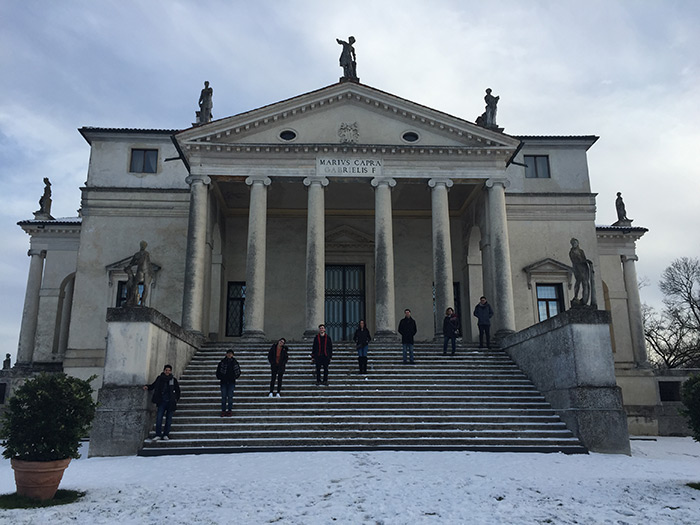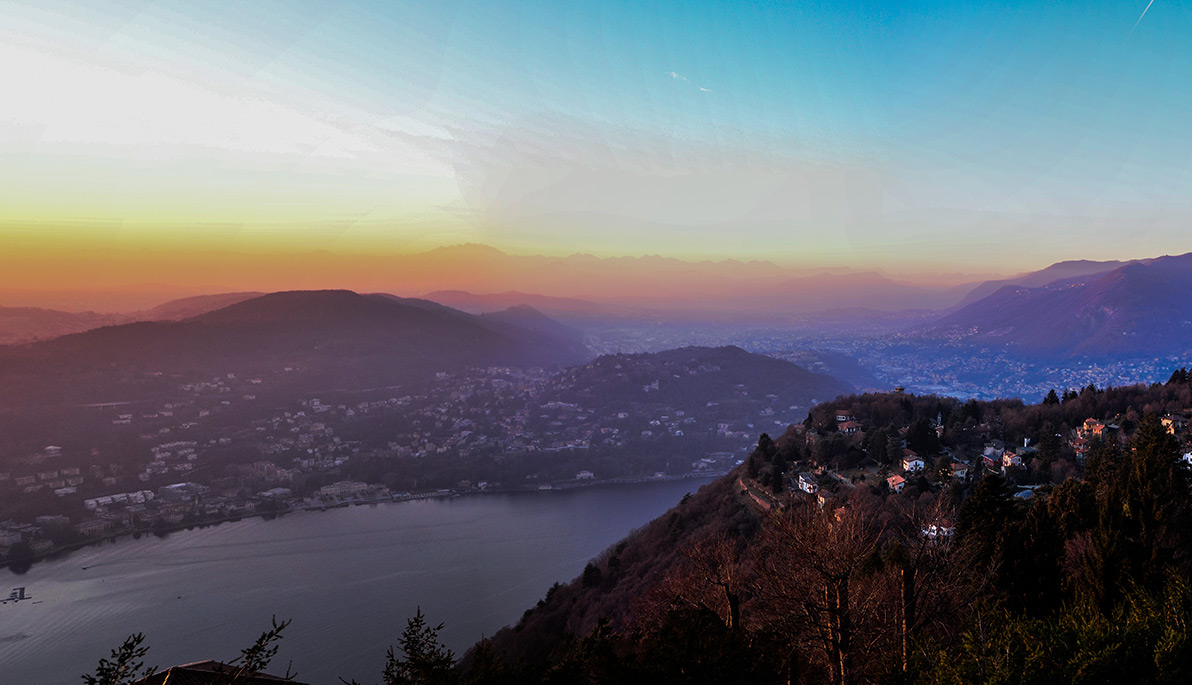News
Curious Excursions: Students Explore a World of Architecture
April 13, 2017
Photo: While in Italy, NYIT architecture students visited several historic sites, including Lake Como.
NYIT student Alexandros Hadjistyllis couldn’t tell you how old he was when he decided to become an architect, but whenever he considered other professions—lawyer, doctor, teacher—he began by designing plans of his future office or classroom.
“None of those thoughts about other careers lasted more than two weeks,” he said. “I chose architecture because I was always curious about different buildings I would see around the world.”
Hadjistyllis and his classmates in NYIT School of Architecture and Design are receiving a firsthand look at global architectural styles through study abroad programs in Milan and Amsterdam. Such international trips offer students greater perspectives on their disciplines as they study the rich history of European design and construction, examine differences and commonalities with American architectural theory, and work in design workshops with peers from foreign universities.
In January, Visiting Assistant Professor Giovanni Santamaria led a 10-day trip to Italy for 10 NYIT students, including Hadjistyllis. The group collaborated with colleagues from the School of Architecture and Society at the Politecnico di Milano to better understand sustainable growth in urban environments.
“They had the chance to discuss theoretical approaches, design proposals and foci, exchanging perspective and goals across the different academic and cultural backgrounds,” said Santamaria. International study abroad programs, he added, help students find continuity in architectural design that dates back hundreds of centuries. “They can see historic buildings and architecture in a cultural context that they are not exposed to in a classroom.”

Students visit the Villa La Rotonda in Vicenza, Italy. Built during the Renaissance in the 16th century, the historic villa was designed by renowned Italian architect Andrea Palladio.
Traveling to different architectural sites and working with peers in other countries also helps students better learn the universal language of architecture.
“One of the best things about architecture is the fact that you can get so much from interacting with other professionals,” said Hadjistyllis. “It doesn’t matter where one comes from, or what the level of knowledge one has on the topic, you can always get an opinion that will help you improve a project.”
Hadjistyllis' favorite part was seeing the works of renowned Italian architect Carlos Scarpa. “Before I visited some of his projects, especially in Verona and Venice, I knew that Scarpa was very talented in mixing different materials,” he said, “but experiencing his architecture was a unique moment.”
Students also went to Milan, Como, Piacenza, Parma, and Vicenza, where they explored sites that demonstrated how architectural theory can be blended with local aesthetics, social dynamics, and politics. Additional locations included the Alps, Lake Como, and the Po Valley in northern Italy.
The School of Architecture and Design’s partnership in Italy is part of a decade-long international exchange agreement between the two schools. From April 14–24, 42 students from the School of Architecture and Society at the Politecnico di Milano and their professors will visit NYIT campuses in New York to participate in a workshop titled "Metabolism of a City." They will study and expand upon resilient design proposals for the neighborhoods alongside New York City’s East River in Brooklyn and the Bronx.
GOING DUTCH
Recent School of Architecture and Design study abroad programs also included a visit to an old city where NYIT students learned new techniques.
In early January, seven undergraduates under the supervision of Adjunct Professor Antonio Gabriele visited Amsterdam, the Netherlands, to explore Dutch urbanism and design, flood resilience, and the evolution of the city that dates back to the early 14th century.
Flood control in the Netherlands deserves considerable attention from urban planners in the region, as an estimated two-thirds of the country’s population is vulnerable. In the fall 2016 semester, NYIT students in New York developed a thesis based on “the principles of density, capacity, flooding, and humanitarianism” as it impacts Amsterdam, said Gabriele. “The end goal was to deliver an articulate urban strategy and its implementation within the city proper,” he added.
The winter excursion was designed to show how students needed to “unlearn” their preconceptions and designs in order to better understand the practical application of urban architecture. Their six-day trip included site visits throughout the city as well as the more urbanized city of Rotterdam (about an hour’s drive south of Amsterdam). They also presented their architectural designs to the New Projects Department of the Amsterdam City Planning Department, where they were met with “applause and received great feedback,” said Gabriele.
“Once students can see the sites with their own eyes, and hear criticism from the mouths of the experts, they then understand what needs to be diverted, reconvened, and rethought in their proposals,” he said. In the spring 2017 semester, students will draw upon the feedback as well as their own onsite observations to refine their urban designs.
Students also toured the offices of Rotterdam-based MVRDV, an architectural and urban design practice.
“It was great to hear not only what locals thought about our solutions but what professionals in our field thought,” said student Tania Mendes. “We were able to talk and learn more about Amsterdam, but we also got valuable advice about moving forward in our field after graduation. And it was a breath of fresh air to see how other people live.”





